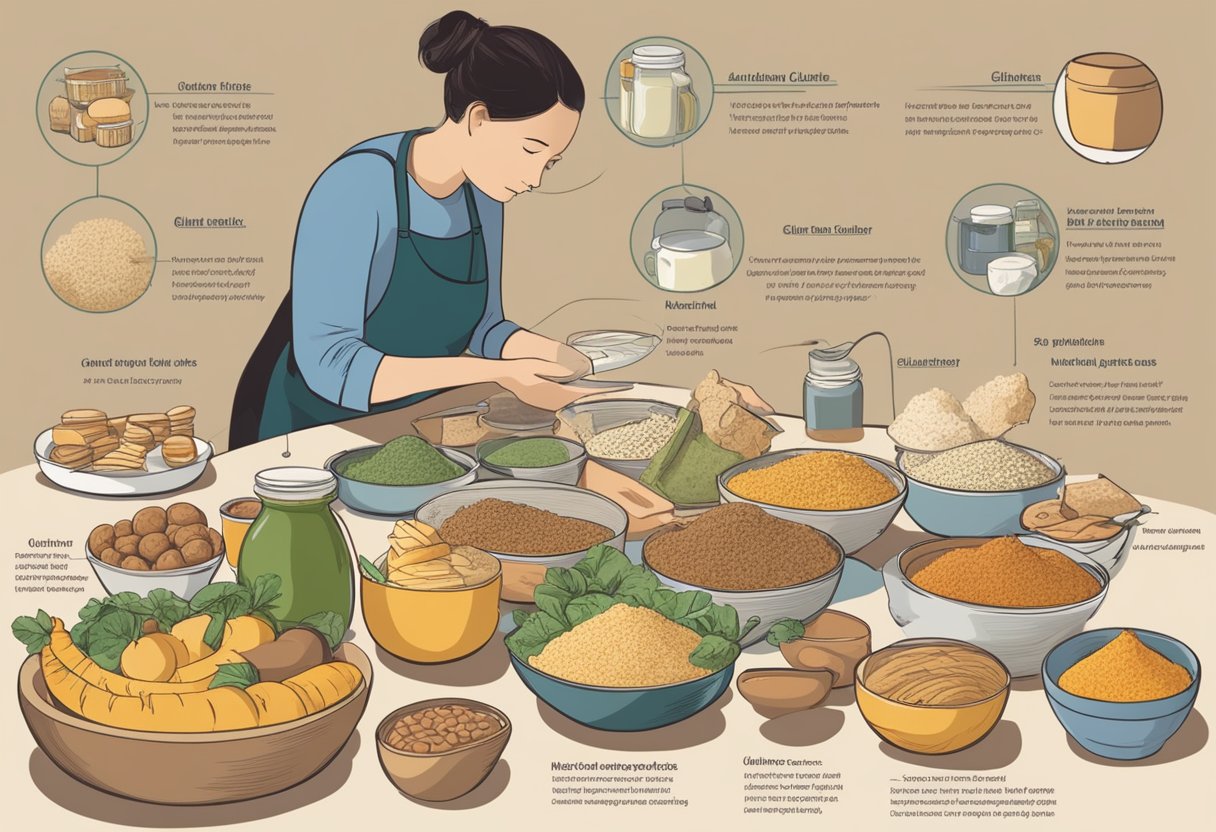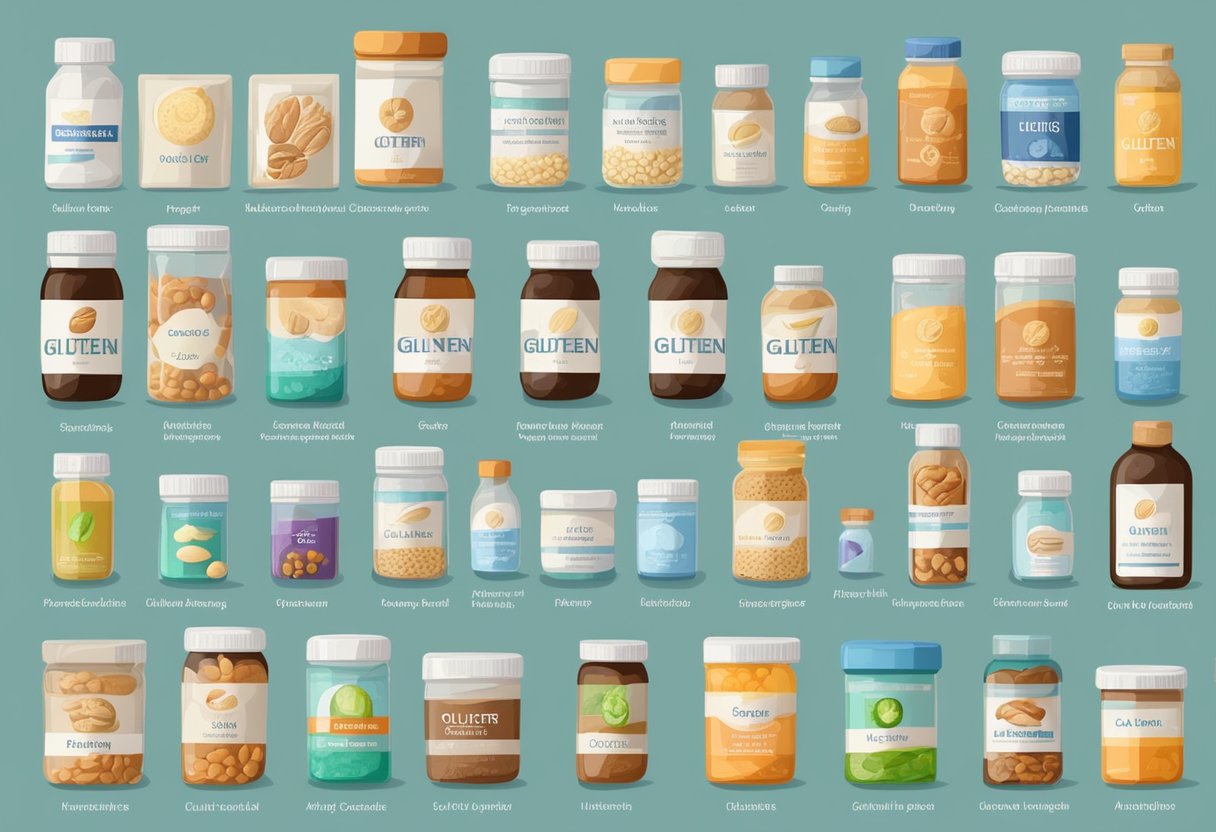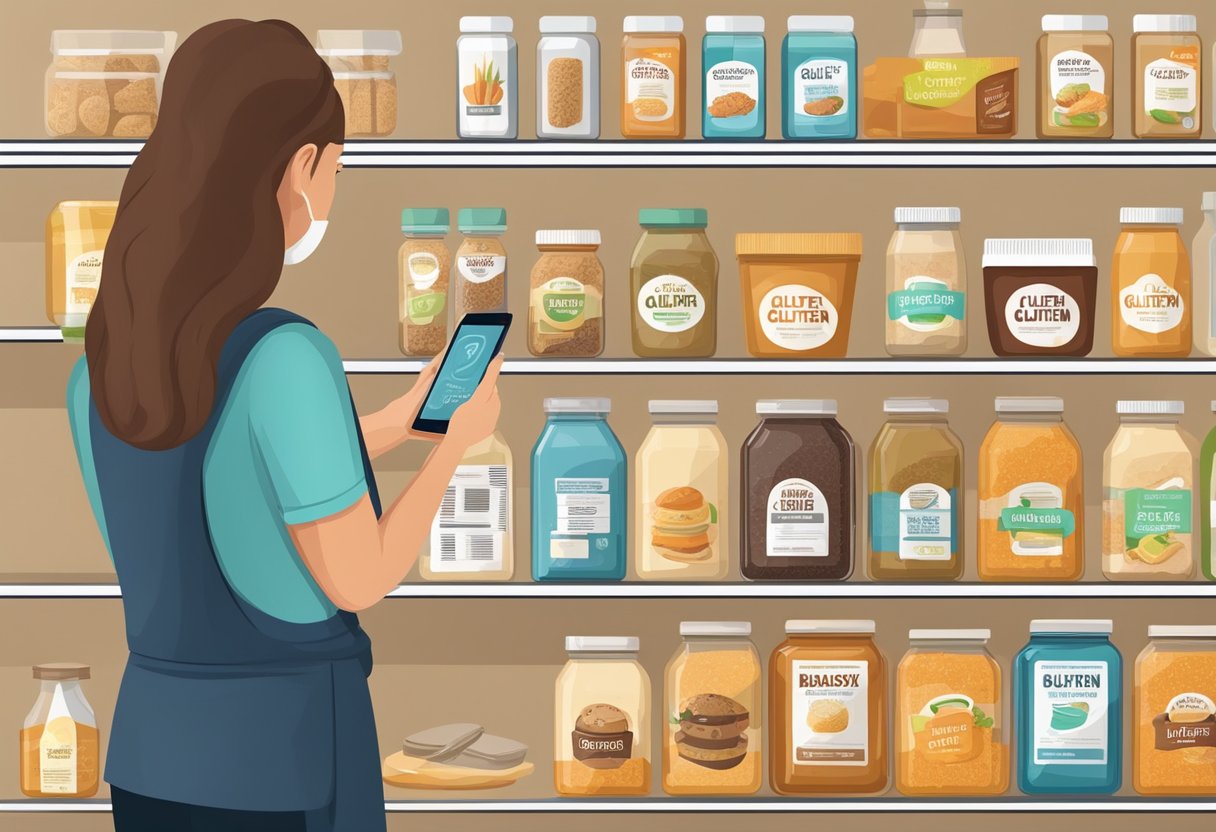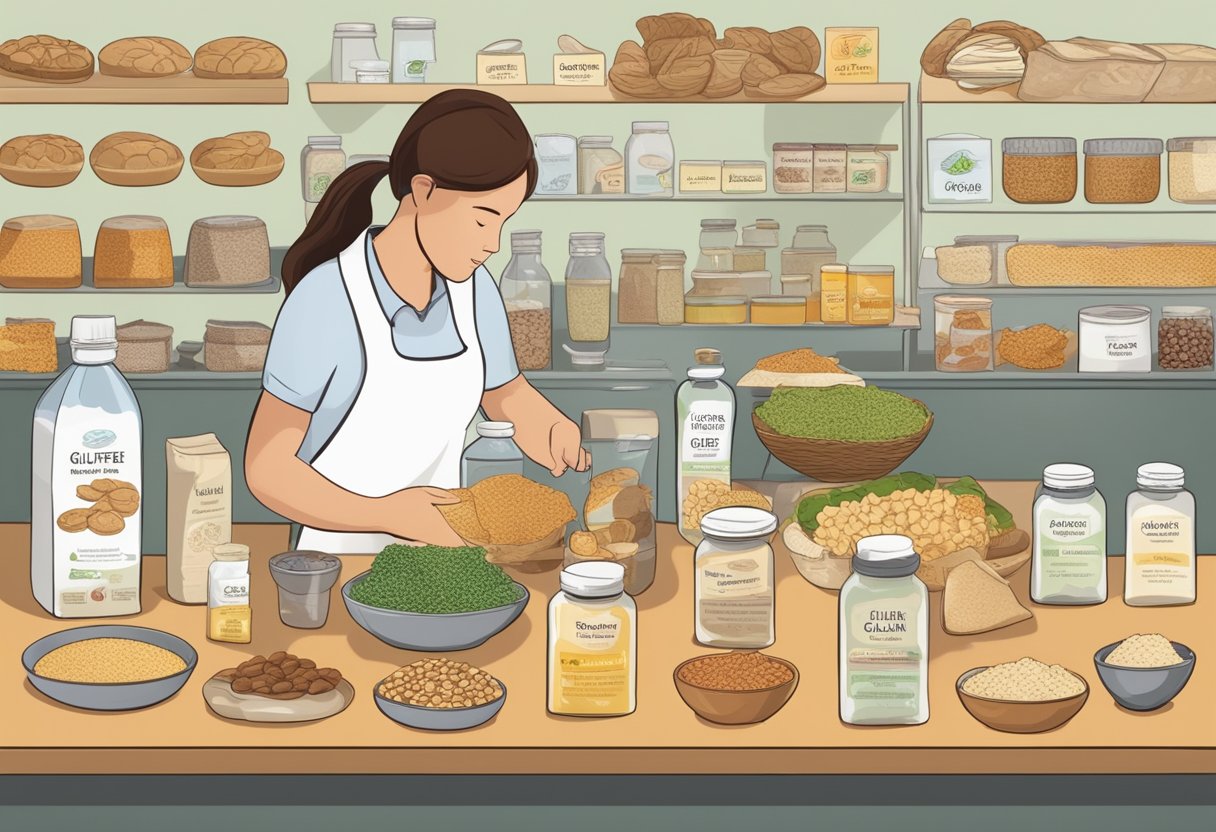Understanding what foods contain gluten is essential, especially for those with celiac disease, gluten sensitivity, or a preference for a gluten-free lifestyle. Grains such as wheat, barley, and rye are the most typical sources of gluten, a protein that can cause adverse reactions in certain individuals. However, gluten is also present in numerous processed foods, some of which are not obvious at first glance. For instance, gluten can be found in products like salad dressings, soups, and even some medications, making label reading and awareness critical for maintaining a gluten-free diet.

Navigating a gluten-free diet effectively requires recognizing the hidden sources of gluten and understanding how cross-contamination can occur in foods that would otherwise be safe. With the increasing availability of gluten-free alternatives, including those that fit into a Mediterranean diet, individuals can enjoy a variety of nutritious foods without the concern of gluten exposure. Alongside fresh fruits, vegetables, and lean proteins, there are gluten-free grains like quinoa and rice that make excellent additions to a balanced diet.
Key Takeaways
- Gluten is a protein in wheat, barley, rye, and can be hidden in many processed foods.
- Reading food labels and being aware of cross-contamination is crucial for a gluten-free diet.
- A gluten-free Mediterranean diet can include gluten-free grains, fruits, vegetables, and lean proteins.
Table of Contents
Understanding Gluten and Related Health Issues
In this section, readers will gain an informed understanding of gluten, a foundational overview of celiac disease, and insights into non-celiac gluten sensitivity. Shedding light on these topics will empower individuals to make informed dietary decisions, particularly within a gluten-free Mediterranean diet framework.
What Is Gluten?
Gluten is a protein composite found in grains such as wheat, barley, and rye. It is what gives bread its chewy texture and is commonly used as a stabilizing agent in various food products. However, for those adhering to a gluten-free Mediterranean diet, it is crucial to note that traditional Mediterranean staples such as fruits, vegetables, legumes, nuts, seeds, fish, and olive oil are naturally gluten-free.
Celiac Disease Explained
An autoimmune disorder, celiac disease occurs when the ingestion of gluten leads to damage in the small intestine. It is critical to recognize that this condition triggers an inappropriate immune response, which harms the intestinal lining and prevents the absorption of essential nutrients. Typical symptoms include diarrhea, bloating, weight loss, fatigue, and anemia. Celiac disease requires strict compliance with a gluten-free diet to manage symptoms and promote intestinal healing.
Non-Celiac Gluten Sensitivity
Individuals with non-celiac gluten sensitivity experience symptoms similar to those of celiac disease upon consuming gluten, yet they do not test positive for the disease itself. The range of these symptoms can include gastrointestinal issues as well as joint pain, headaches, and fatigue. They must monitor their reaction to gluten-containing foods and might find relief by following a Mediterranean diet, which emphasizes naturally gluten-free foods.
Common Sources of Gluten

When managing a gluten-free Mediterranean diet, it’s essential to identify gluten in various foods. Gluten is predominantly found in certain grains and many everyday food products, but it can also lurk in less obvious places. Understanding where gluten hides is the first step to avoiding it.
Identifying Gluten in Grains
Grains are a staple in many diets but some contain gluten, a protein that must be avoided in gluten-free eating. The primary grains containing gluten include:
- Wheat: Including varieties like spelt, kamut, farro, and durum.
- Barley: Often found in malt extracts and beverages.
- Rye: Commonly used in bread and cereals.
- Triticale: A hybrid of wheat and rye.
- Oats: Though naturally gluten-free, cross-contamination with gluten-containing grains is common, so look for oats specifically labeled gluten-free.
Gluten-Containing Food Products
Many traditional Mediterranean diet foods can contain gluten, so careful selection is necessary. Some common food products that include gluten are:
- Bread and Pasta: Regular varieties typically use wheat flour.
- Cereal: Many are made with wheat, barley, or rye.
- Baked Goods: Cakes, cookies, and pastries usually have wheat flour.
- Processed Foods: Often have added gluten for texture or as a thickener.
- Beer: Most beer is brewed with barley unless labeled gluten-free.
Hidden Sources of Gluten
Gluten can also be hidden in products not typically associated with grains. To maintain a gluten-free Mediterranean diet, watch for gluten in:
- Sauces, Salad Dressings, and Marinades: May use wheat as a thickener.
- Processed Meats: Fillers made from gluten-containing grains could be present.
- Soups: Some thicken their broth with gluten-containing flours or barley.
Identifying gluten requires attention to detail and careful reading of labels. Those on gluten-free diets must be vigilant to ensure the Mediterranean dishes they enjoy are safe for their dietary needs.
The Gluten-Free Diet
A gluten-free diet is a nutritional plan that excludes gluten, a protein found in grains such as wheat, barley, and rye. Key to managing health conditions like celiac disease, this diet relies on gluten-free grains and flours like rice, corn, and quinoa.
Fundamentals of a Gluten-Free Diet
Adopting a gluten-free diet involves eliminating all products containing gluten. It’s crucial for individuals with celiac disease or gluten intolerance, as their bodies cannot process gluten properly, leading to health complications. Their mainstays include naturally gluten-free grains such as rice, corn, and quinoa. These grains provide essential carbohydrates, fiber, and a variety of minerals and vitamins.
- Rice: A versatile grain that serves as a staple food for many.
- Corn: Can be enjoyed as cornmeal, polenta, or fresh.
- Quinoa: A high-protein grain also rich in fiber and essential amino acids.
One must carefully read labels, as gluten hides in many processed foods under different names. Even products like soups, sauces, and ready-made meals may contain gluten.
Gluten-Free Substitutes and Alternatives
For individuals on a gluten-free diet, finding substitutes for gluten-containing foods is essential to maintain variety in their meals. Gluten-free products like breads, pastas, and baked goods are increasingly available, using gluten-free flours made from rice, corn, almond, coconut, and other gluten-free sources. These substitutes mimic the texture and flavor profiles of their gluten-containing counterparts:
- Gluten-free bread: Often made from a blend of rice flour, potato flour, and tapioca starch.
- Gluten-free pasta: Typically crafted from corn or quinoa flour.
The market also offers a plethora of gluten-free snacks, cereals, and convenience foods designed with these alternative ingredients.
Designing a Balanced Gluten-Free Meal
A balanced gluten-free meal prioritizes diversity to ensure all nutritional needs are met. Including a variety of gluten-free grains and flours in one’s diet supports this balance. For instance, a gluten-free Mediterranean diet would feature:
- A base of quinoa or rice.
- A portion of protein from legumes, fish, or lean meats.
- Abundance of fresh vegetables and fruits.
- Healthy fats from nuts, seeds, and olive oil.
By incorporating foods naturally free from gluten and those adapted to fit a gluten-free lifestyle, individuals can enjoy a flavorful and nutritionally complete menu.
Reading Food Labels and Identifying Gluten
When adopting a gluten-free Mediterranean diet, it is crucial to understand how to read food labels and identify gluten-containing ingredients. Awareness of gluten-free certification and laws is also essential to ensure a safely managed diet.
Deciphering Food Labels
Food labels can be a minefield for individuals with gluten intolerance or celiac disease. Key ingredients to watch out for include wheat flour, barley, and rye. These grains contain gluten, a protein complex that should be completely avoided in a gluten-free diet. Scrutinizing labels requires a careful eye for ingredients such as malt, which is often derived from barley, and wheat starch, which can contain gluten unless specifically processed to remove it.
Grains to Avoid:
- Wheat (e.g., durum, spelt, farro)
- Barley
- Rye
Common Gluten-containing Ingredients:
- Malt (malt extract, malt syrup, malt flavoring)
- Wheat starch (unless labeled gluten-free)
- Brewer’s yeast (unless specified as gluten-free)
Gluten-Free Certification and Laws
Gluten-free certification is a voluntary process that provides a level of reassurance for consumers. Products with a gluten-free label have met strict standards set by the FDA or certification bodies. Since August 2014, the FDA requires that products labeled gluten-free must contain less than 20 parts per million of gluten. This threshold is considered safe for most people with gluten sensitivity.
FDA Gluten-Free Labeling Requirements:
- Products must contain less than 20 ppm of gluten.
- Voluntary gluten-free certification offers additional assurance.
When someone has celiac disease or non-celiac gluten sensitivity, every food item needs to be evaluated for potential gluten content. While the Mediterranean diet focuses on naturally gluten-free foods like fruits, vegetables, legumes, nuts, seeds, fish, and lean meats, careful label reading is indispensable when incorporating packaged products or grains like quinoa and rice that are gluten-free but are at risk for cross-contamination during processing.
Cross-Contamination and Gluten Exposure
For individuals following a gluten-free Mediterranean diet, understanding and preventing cross-contamination is crucial. Even small traces of gluten can undermine the diet’s benefits and cause health issues.
Understanding Cross-Contamination
Cross-contamination occurs when gluten-free foods come into contact with gluten-containing foods or surfaces, leading to involuntary gluten exposure. Key areas of concern in the kitchen include shared cooking surfaces, utensils, and appliances. For example, using the same toaster for regular and gluten-free bread can cause significant gluten transfer, making the gluten-free bread no longer safe for someone with gluten sensitivity or celiac disease.
Gluten can be present in tiny amounts but still cause issues for someone on a gluten-free diet. Certain kitchen practices, such as using common spreads for different bread types, can result in gluten particles contaminating gluten-free options.
Preventing Gluten Cross-Contamination
Implementing dedicated gluten-free zones is an effective strategy in avoiding cross-contamination. Here are some guidelines:
- Use separate utensils and cutting boards for gluten-free foods.
- Thoroughly clean shared kitchen appliances before use with gluten-free products.
- Use squeeze bottles for condiments to prevent crumbs from bread entering the containers.
It’s also essential to consider cross-contamination when dining out. Restaurants should be vetted for their gluten-free practices to ensure meals align with the stringent needs of a gluten-free Mediterranean diet.
While most patients with celiac disease may tolerate up to 10 mg of gluten daily, it is best to aim for no exposure. This requires vigilance in food preparation and handling, taking extra care to prevent gluten-containing ingredients from mixing with gluten-free ingredients.
Health Considerations on a Gluten-Free Diet
Adopting a gluten-free diet necessitates a careful approach to ensure one’s nutritional needs are met while managing underlying health conditions. It is important to address potential nutrient deficiencies and understand how this diet interacts with conditions like celiac disease and gluten sensitivity.
Nutritional Deficiencies and Supplements
When individuals adopt a gluten-free diet, they often eliminate several sources of essential nutrients inadvertently. Therefore, they must find alternative sources or consider supplements.
- Key Nutrients at Risk: Common nutrient deficiencies amongst those on a gluten-free diet may include iron, calcium, fiber, thiamin, riboflavin, niacin, and folate.
- Supplement Solutions: A daily multivitamin or specific supplements such as iron, calcium, and vitamin D can help prevent deficiencies.
- Mediterranean Focus: Emphasizing a Mediterranean-inspired diet with naturally gluten-free foods like olives, fish, and legumes can provide balance and variety, supplying most of these vital nutrients.
Managing Health Conditions with a Gluten-Free Diet
For individuals with celiac disease or gluten sensitivity, following a strict gluten-free diet is imperative. It is the only effective treatment for managing symptoms and preventing long-term complications.
- Celiac Disease: The immune response caused by gluten in those with celiac disease can lead to the damage of the small intestine’s lining. This can be avoided entirely through a gluten-free diet.
- Gluten Sensitivity: While not as severe as celiac disease, gluten sensitivity can still cause discomfort and health issues which can be alleviated by eliminating gluten from the diet.
- Mediterranean Adaptation: Incorporating Mediterranean diet principles, such as the consumption of whole foods like fruits, vegetables, and lean proteins, can support overall health and ease management of these conditions.
Gluten in Medications and Non-Food Items

While focusing on a gluten-free Mediterranean diet, individuals must be aware that gluten can also be present in medications and non-food items, which may impact health and diet management efforts.
Identifying Gluten in Medications
Gluten, a protein typically found in wheat, barley, and rye, may not be limited to foods but can also find its way into medications. People maintaining a gluten-free diet due to celiac disease or non-celiac gluten sensitivity should pay particular attention to the inactive ingredients in medicines, which can sometimes include gluten-containing starches as fillers or binders. Differentiating between gluten-free and gluten-containing medications requires carefully examining ingredient labels and consulting healthcare providers or pharmacists. Medications can have different formulations, and generics may differ from brand names in their gluten content.
For instance, certain oral drug products may use gluten as an excipient, which could trigger adverse reactions. Individuals should scrutinize ingredients for “red flags,” such as starches that may be derived from wheat or other gluten-containing grains. An inquiry into the specific sources of starch in medications is crucial to verify their safety for a gluten-free regimen.
Non-Food Sources of Gluten
Beyond medications, individuals should also be vigilant about non-food sources of gluten, which include a range of everyday products like healthcare products and cosmetics. Gluten can be used as a binder or stabilizer and could exist in items such as lip balms, lotions, and shampoos. Maintaining a gluten-free lifestyle thus extends to personal care products, especially products that may come into contact with the mouth or are likely to be ingested inadvertently.
Items to watch for potential gluten presence include:
- Lipstick and lip balms
- Dental care products
- Lotions and creams
- Hair care products
Consumers should look for labeling that indicates a product is gluten-free or seek out certifications from reputable organizations. When in doubt, they ought to contact the manufacturer directly to ensure a product’s gluten status aligns with their dietary needs.
Support and Resources

Adopting a gluten-free Mediterranean diet can be streamlined with access to robust support networks and expert advice. Below are essential resources for those seeking guidance and community.
Gluten-Free Communities and Groups
Individuals can join online communities that provide a platform for sharing experiences and tips tailored to gluten-free living. The Celiac Disease Foundation offers extensive support for those with celiac disease, where members are empowered to exchange recipes and advice pertinent to the Mediterranean diet. Similarly, the National Celiac Association extends membership benefits, including groups focused on the nuances of maintaining a gluten-free diet within the framework of Mediterranean culinary traditions.
Working with Registered Dietitians
Consulting a registered dietitian who is well-versed in gluten-free diets can be invaluable. Dietitians possess expertise in tailoring the Mediterranean diet to accommodate gluten intolerance, ensuring balanced nutrition. For individuals navigating dietary adjustments, Gluten Intolerance Group provides resources to connect with dietitians adept at integrating Mediterranean foods that inherently lack gluten, like quinoa and certain ancient grains, into one’s meal plan.
Frequently Asked Questions

Navigating a gluten-free diet can be challenging. Knowing how to identify gluten in ingredients and which foods traditionally contain it, as well as tools for managing a gluten-free lifestyle, are crucial for maintaining good health, especially for those with celiac disease or gluten sensitivity.
How can you determine if a food product contains gluten by reading the ingredient list?
To determine if a product contains gluten when reading the ingredient list, one should look for key terms such as wheat, barley, rye, and malt. More comprehensive information can be found by reading resources such as Ingredient lists to Watch For that detail other names for gluten and hidden sources.
What are common foods that typically contain gluten?
Common foods that typically contain gluten include bread, pasta, cereals, and baked goods. These items often have wheat, barley, or rye as primary ingredients. A traditional Mediterranean diet, rich in fruits, vegetables, legumes, and grains, can also include gluten-containing grains like farro and bulgur.
Which ingredients should be avoided to maintain a gluten-free diet?
Ingredients to avoid on a gluten-free diet are wheat, barley, rye, triticale, and any derivatives of these grains such as malt or brewer’s yeast. Gluten-free alternatives are abundant in a Mediterranean diet, such as quinoa, millet, and rice.
Can you recommend any reliable gluten-free ingredient checker tools or apps?
There are several reliable gluten-free checker tools and apps available. One can consult dedicated gluten-free diet resources such as Celiac Disease Foundation’s FAQ for recommendations on these tools which can simplify identifying gluten-free products and ingredients.
What are some unexpected sources of gluten to watch out for in food labels?
Some unexpected sources of gluten include condiments, soups, and processed meats, as these may contain additives or fillers derived from gluten grains. It is important for consumers to examine food labels thoroughly.
How can consumers test for the presence of gluten in their meals at home?
Consumers can test for the presence of gluten in meals at home using certain home-test kits. While not a replacement for thorough food label examination, these kits can provide an additional level of assurance for avoiding gluten ingestion.



